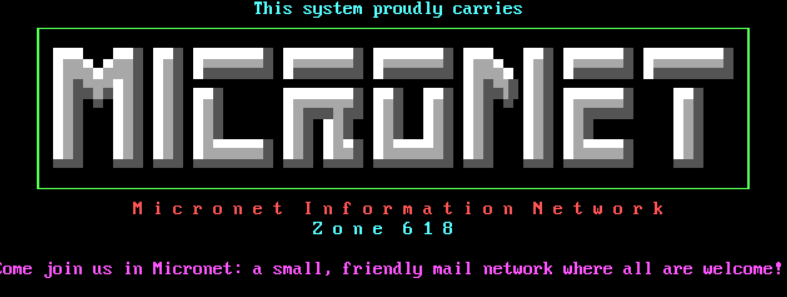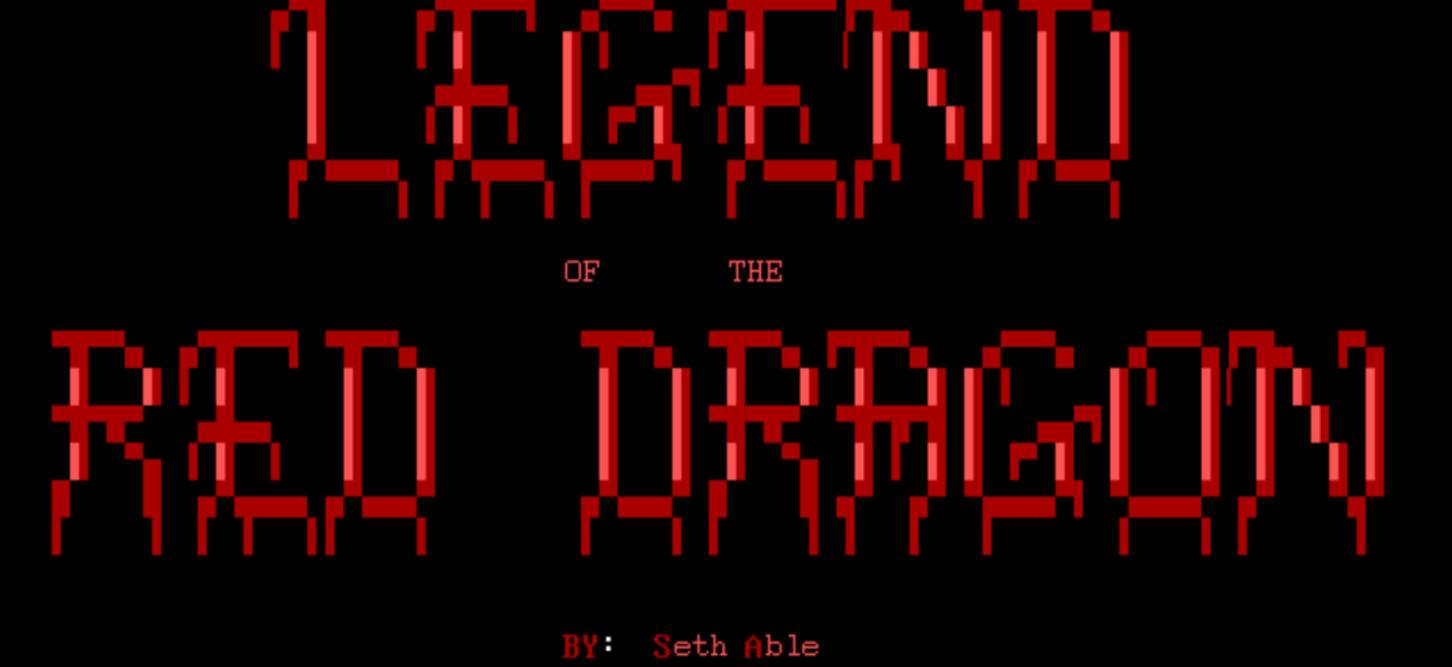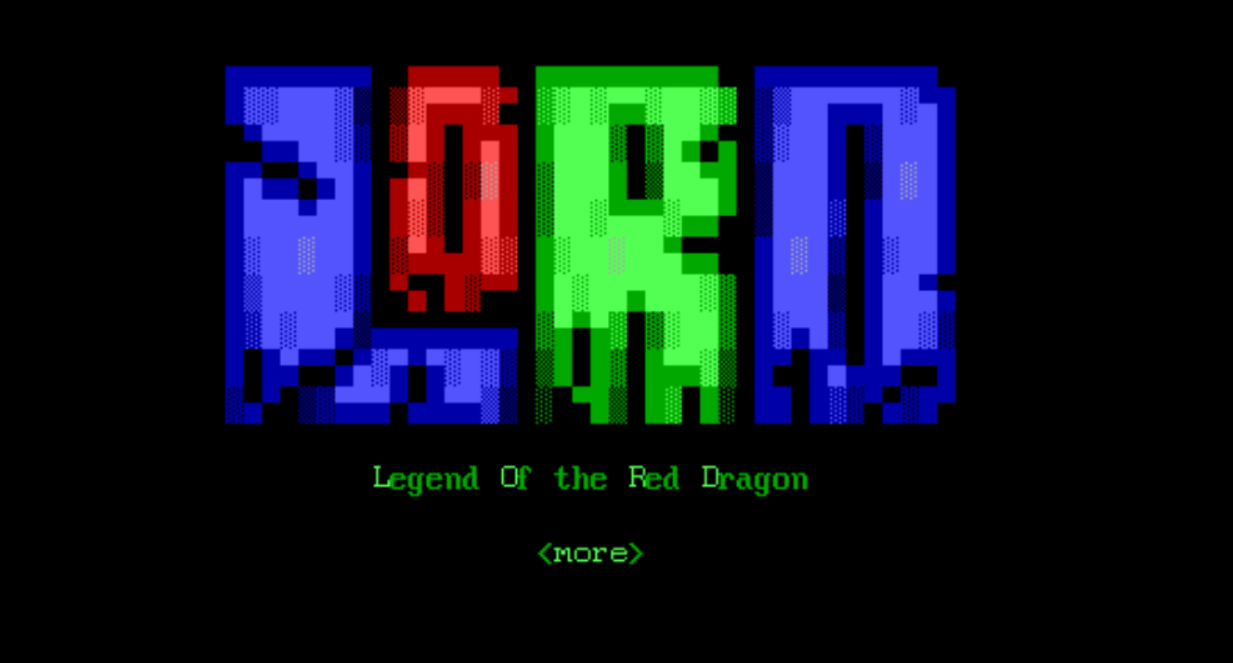-
FidoNews 39:52 [00/07]: The Front Page
From FidoNews Robot@2:2/2 to All on Monday, December 26, 2022 01:27:13The F I D O N E W S Volume 39, Number 52 26 Dec 2022 +--------------------------+-----------------------------------------+
| |The newsletter of the | | |
| | FidoNet community. | | Netmail attach to (POTS): |
| | | | Editor @ 2:2/2 (+46-31-960447) |
| | ____________| | |
| | / __ | Netmail attach to (BinkP): |
| | / / \ | Editor @ 2:203/0 |
| | WOOF! ( /|oo \ | |
| \_______\(_| /_) | Email attach to: |
| _ @/_ \ _ | b @ felten dot se |
| | | \ \\ | |
| | (*) | \ ))| |
| |__U__| / \// | Editor: Bj”rn Felten |
| ______ _//|| _\ / | |
| / Fido \ (_/(_|(____/ | Newspapers should have no friends. |
| (________) (jm) | -- JOSEPH PULITZER | +--------------------------+-----------------------------------------+
Table of Contents
1. FTSC INFORMATION ......................................... 1
******************************************************* .. 1
2. LIST OF FIDONET IPV6 NODES ............................... 5
List of IPv6 nodes ....................................... 5
3. JAMNNTPD SERVERS LIST .................................... 8
The Johan Billing JamNNTPd project ....................... 8
4. FIDONEWS'S FIDONET SOFTWARE LISTING ...................... 9
5. SPECIAL INTEREST ......................................... 16
Statistics from the Fidoweb .............................. 16
Nodelist Stats ........................................... 17
6. FIDONEWS INFORMATION ..................................... 19
How to Submit an Article ................................. 19
Credits, Legal Infomation, Availability .................. 21
--- Azure/NewsPrep 3.0
* Origin: Home of the Fidonews (2:2/2.0)
-
From FidoNews Robot@2:2/2 to All on Monday, December 26, 2022 01:27:13=================================================================
FTSC INFORMATION =================================================================
FTSC FIDONET TECHNICAL STANDARDS COMMITTEE *********************************************************************
Publication: FTS-4010
Revision: 1
Title: The PING and TRACE flags
Author(s): Michiel van der Vlist,
FTSC members and administrator.
Issue Date: 2022-12-24 =====================================================================
Status of this document
-----------------------
This document is a FidoNet Technical Standard (FTS).
This document specifies an optional FidoNet standard for the FidoNet
community.
This document is released to the public domain, and may be used,
copied or modified for any purpose whatever.
This document supersedes and replaces FSP-1043.
FSP-1043 is preserved in the FTSC reference library as FRL-1040.
---------------------------------------------------------------------
Contents:
0. Definitions
1. Introduction.
2. The problem.
3. The solution.
4. Considerations
A. References
B. History ---------------------------------------------------------------------
0. Definitions
--------------
The key words "MUST", "MUST NOT", "REQUIRED", "SHALL", "SHALL
NOT", "SHOULD", "SHOULD NOT", "RECOMMENDED", "MAY", and "OPTIONAL"
in this document are to be interpreted as described in [FTA-1006].
1. Introduction
---------------
The PING functionality as introduced by Ward Dossche just over two
decades ago and advertised by the PING flag is a very useful tool
in tracing and solving routing problems. This proposal is an update
of the original specs and introduces the TRACE flag.
2. The problem
--------------
In the original specification as documented by Ward Dossche in the
April 2001 Z2 nodelist trailer and the specification last documented
in FTS-5001.006, the PING functionality contains two parts: PING and
TRACE. According to that specification systems flying the PING flag
should support both PING and TRACE functionality.
Recent surveys by the author however have shown that not all systems
flying the PING flag also support the TRACE functionality. One could
argue that current practice is that TRACE functionality is optional.
Considering that the PING function alone is a very useful tool all
by itself for both routing systems and leaf systems and that TRACE
is only useful for routing systems, one may conclude that the above
current practice works well, but that it is not compliant with the
original and current specs.
3. The Solution
---------------
Split up the PING and TRACE functionality.
PING
----
Specified as exactly "PING" with no arguments. Nodes flying this
flag will adhere to the following functionality:
If a message destined to user "PING" (case insensitive) arrives
at its final destination and this final destination flies the
PING flag, then the receiving node will bounce the message back
to the original sender clearly quoting all the original via
lines.
If a message destined to "PING" arrives at its final destination
but this final destination does _not_ fly the PING flag then the
message may be deleted from the system without further action.
TRACE
-----
Specified as exactly "TRACE" with no arguments. Nodes flying this
flag will adhere to the following functionality:
If a message destined to user "PING" (case insensitive) arrives
at a node which flies the TRACE flag but is merely passing
through to another destination then the in-transit node will
notify the sender of this occurrence, clearly quoting the via
lines, and forward the original mail unaltered towards its final
destination.
For both PING and TRACE responses, the sender's name must never
be "PING" and the responses must never be addressed to "PING".
4. Considerations
-----------------
Making the TRACE function optional by separating the flags, is an
encouragement for developers and script writers to join the project.
They can choose to only implement the PING functionality and leave
TRACE functionality for later or omit it completely without
violating the specs. This will hopefully make more sysops join
the PING club.
Splitting up the PING and TRACE functionality by introducing the
TRACE flag is backward compatible. Systems flying the PING flag
that do not support TRACE need do nothing, they are compliant
with the new specs. Systems flying the PING flag that support
both PING and TRACE functionality may add the TRACE flag to their
listing. But if they do not, no harm is done, they are still
compliant with the new specs, it just does not advertise all
functionality.
A. References
-------------
[FTS-5] "The distribution nodelist".
Ben Baker, Rick Moore, and David Nugent.
1996-02-27. Obsoleted by FTS-5000.
FTS-5000] "The distribution nodelist".
FTSC Members, Administrator, and Honoured Guests.
2014-01-23.
[FTS-5001] "Nodelist flags and userflags".
FTSC Members, Administrator, and Honoured Guests
2017-08-13.
A PING robot survey.
Michiel van der Vlist.
Fidonews 38:07, 2021-02-15.
Ping robot survey, a follow up.
Michiel van der Vlist.
Fidonews 38:15, 2021-04-12.
B. History
----------
Rev.1, 2022-12-24: Initial release.
-----------------------------------------------------------------
--- Azure/NewsPrep 3.0
* Origin: Home of the Fidonews (2:2/2.0)
-
From FidoNews Robot@2:2/2 to All on Monday, December 26, 2022 01:27:13=================================================================
LIST OF FIDONET IPV6 NODES =================================================================
List of IPv6 nodes
By Michiel van der Vlist, 2:280/5555
Updated 18 December 2022
Node Nr. Sysop Type Provider Remark
1 2:280/464 Wilfred van Velzen Native Freedom f
2 2:280/5003 Kees van Eeten Native KPN f
3 2:5019/40 Konstantin Kuzov T-6in4 he.net f
4 2:280/5555 Michiel van der Vlist Native Ziggo f
5 1:320/219 Andrew Leary Native Comcast f
6 2:221/1 Tommi Koivula Native Elisa f
7 2:221/6 Tommi Koivula Native OVH
8 2:5030/257 Vova Uralsky Native PCextreme
9 1:154/10 Nicholas Boel Native Spectrum f
10 2:203/0 Bjorn Felten T-6in4 he.net
11 2:280/5006 Kees van Eeten Native KPN f INO4
12 3:712/848 Scott Little T-6in4 he.net f
13 2:5020/545 Alexey Vissarionov T-6in4 he.net f
14 1:103/17 Stephen Hurd T-6in4 he.net
15 2:5020/9696 Alexander Skovpen T-6in4 TUNNELBROKER-0
16 2:421/790 Viktor Cizek Native CZ-IJC-20071015
17 2:222/2 Kim Heino Native TeliaSonera
18 3:633/280 Stephen Walsh Native AusNetServers f
19 1:19/10 Matt Bedynek T-6in4 he.net
20 3:770/1 Paul Hayton T-6in4 he.net
21 3:770/100 Paul Hayton T-6in4 he.net
22 2:5053/58 Alexander Kruglikov Native TTK-Volga f
23 1:103/1 Stephen Hurd Native Choopa
24 3:633/281 Stephen Walsh Native Internode
25 2:310/31 Richard Menedetter Native DE-NETCUP f
26 3:633/410 Tony Langdon Native IINET
27 2:5020/329 Oleg Lukashin Native Comfortel f
28 2:246/1305 Emil Schuster Native TAL.DE
29 2:2448/4000 Tobias Burchhardt Native DTAG IO
30 2:331/51 Marco d'Itri Native BOFH-IT
31 1:154/30 Mike Miller Native LINODE
32 2:5001/100 Dmitry Protasoff Native OVH
33 2:5059/38 Andrey Mundirov T-6in4 he.net
34 2:240/5853 Philipp Giebel Native Hetzner
35 2:5083/444 Peter Khanin Native OVH
36 2:240/5413 Ingo Juergensmann Native RRBONE-COLO f
37 1:123/10 Wayne Smith T-6in4 he.net
38 2:4500/1 Eugene Kozhuhovsky Native DATAHATA6
39 1:135/300 Eric Renfro Native Amazon.com
40 1:103/13 Stephen Hurd Native Choopa
41 2:5020/1042 Michael Dukelsky Native FirstByte
42 2:5095/0 Sergey V. Efimoff T-6in4 he.net
43 2:5095/20 Sergey V. Efimoff T-6in4 he.net
44 2:5019/400 Konstantin Kuzov Native LT-LT
45 2:467/239 Mykhailo Kapitanov Native Vultr f
46 2:463/1331 Andrei Dzedolik Native DIGITALOCEAN
47 2:5010/275 Evgeny Chevtaev T-6in4 TUNNELBROKER-0 f
48 2:280/2000 Michael Trip Native KPN
49 2:230/38 Benny Pedersen Native Linode
50 2:460/58 Stas Mishchenkov T-6in4 he.net f
51 2:5020/2123 Anton Samsonov T-6in4 TUNNEL-BROKER-NET-0
52 2:5020/2332 Andrey Ignatov Native ru.rtk
53 2:5005/49 Victor Sudakov T-6in4 he.net f
54 2:5005/77 Valery Lutoshkin T-6in4 NTS f
55 2:5005/106 Alexey Osiyuk T-6in4 he.net f
56 2:5057/53 Ivan Kovalenko Native ER-Telecom f
57 2:5010/352 Dmitriy Smirnov Native SAGE-SU-V6
58 2:292/854 Ward Dossche Native Proximus
59 2:469/122 Sergey Zabolotny T-6in4 he.net f
60 2:5053/400 Alexander Kruglikov Native FirstVDS f
61 2:5030/1997 Alexey Fayans T-6in4 he.net
62 2:5061/15 Eugene Gladchenko Native ARUBAUK-NET
63 2:240/502 Ludwig Bernhartzeder Native DTAG
64 2:423/39 Karel Kral Native WEDOS
65 2:280/1049 Simon Voortman Native Solcon
66 1:102/127 Bradley Thornton Native Hetzner
67 2:335/364 Fabio Bizzi Native OVH
68 1:124/5016 Nigel Reed Native DAL1-US f
69 2:5075/37 Andrew Komardin Native IHC-NET
70 2:263/5 Martin List-Petersen Native TuxBox
71 2:5030/1520 Andrey Geyko T-6in4 he.net f
72 1:229/664 Jay Harris Native Rogers f
73 1:134/101 Kostie Muirhead T-6in4 he.net f
74 2:280/2030 Martien Korenblom Native Transip
75 3:633/509 Deon George Native Telstra
76 2:5020/4441 Yuri Myakotin Native SOVINTEL
77 1:320/319 Andrew Leary Native Comcast f
78 2:240/5824 Anna Christina Nass Native DTAG f
79 2:460/5858 Stas Mishchenkov T-6in4 he.net f INO4
80 2:5030/3165 Serg Podtynnyi Native DIGITALOCEAN
81 2:301/812 Benoit Panizon Native WOODYV6
82 1:229/616 Vasily Losev Native GIGEPORT
83 2:301/113 Alisha Stutz T-6in4 he.net
84 1:134/100 Kostie Muirhead T-6in4 he.net f
85 1:134/101 Kostie Muirhead T-6in4 he.net f
86 1:134/102 Shelley Petersen T-6in4 he.net f INO4
87 1:134/103 Gordon Muirhead T-6in4 he.net f
88 1:134/301 Brandon Moore T-6in4 he.net f INO4
89 1:134/302 Adam Park T-6in4 he.net f
90 1:153/7715 Dallas Hinton Native Shaw Comms
91 1:218/840 Morgan Collins Native Linode
92 2:5020/921 Andrew Savin Native HURRICANE-IPV6-24
93 2:240/1634 Hugo Andriessen Native Vodafone
94 2:280/2040 Leo Barnhoorn Native KPN f
95 2:5020/736 Egor Glukhov Native RUWEB f
96 2:221/10 Tommi Koivula Native Hetzner f INO4
97 1:266/420 Scott Street Native Comcast OO
98 1:218/850 John Nicpon Native LINODE-US
99 1:142/104 Clive Reuben Native SNETFCC-1
100 2:301/1 Alisha Stutz Native CH-DATAWIRE
101 3:633/267 Andrew Clarke Native Widebandnetv6
102 2:5035/63 Vladimir Goncharov Native RFEIV6NET
103 2:5010/252 Dmitry Smirnov T-6in4 TUNNEL-BROKER-NET-1
104 2:5020/290 Andrew Kolchoogin T-6in4 he.net
105 1:218/401 James Downs Native Scaleway PM *1
106 1:214/22 Ray Quinn T-6in4 he.net
107 2:5030/49 Sergey Myasoedov Native FR-VIRTUA-SYSTEMS
108 1:218/820 Ryan Fantus Native DIGITALOCEAN
T-6in4 Static 6in4
T-AYIY Dynamic AYIYA
T-6to4 6to4
T-6RD 6RD
Remarks:
f Has a ::f1d0:<zone>:<net>:<node> style host address.
(zone, net, node in decimal notation)
IO Incoming only (Node can not make outgoing IPv6 calls)
OO Outgoing only (Node can not accept incoming IPv6 calls).
INO4 No IPv4 (Node can not accept incoming IPv4 calls).
PO4 Prefers Out on 4 (Node can make outgoing IPv6 calls,
but is configured to try IPv4 first)
6DWN The IPv6 connectivity of this node is temporarely down.
NO6 The node no longer presents an IPv6 address in the nodelist
and will soon be removed from this list.
HOLD The node is temporarely off-line. Mail may be routed.
DOWN This node is Down for both IPv4 and IPv6 and will be
removed from this list if the condition pertains.
PM Prospective Member. The node has demonstrated IPv6
capability but is not listed or does not advertise an
IPv6 address in the Fidonet nodelist yet.
PM *1 lounge.egontech.com
Notes:
To make an IPv6 connection to a node connected via 6to4 tunneling
one may have to force the mailer into IPv6 (-6 option in binkd's
node config for binkd up to 1.1a-96, -64 option for binkd 1.1a-97
and up when compiled with AF_FORCE=1). If the destination address
is a 6to4 tunnel address (2002::/16) many OSs default to IPv4 if
an IPv4 address is present.
Submitted on day 359
-----------------------------------------------------------------
--- Azure/NewsPrep 3.0
* Origin: Home of the Fidonews (2:2/2.0)
-
From FidoNews Robot@2:2/2 to All on Monday, December 26, 2022 01:27:13=================================================================
SPECIAL INTEREST =================================================================
Last week's statistics from the Fidoweb
By EchoTime @ 2:203/0
(Some nets may have lost their last
digit for technical reasons)
pkt (toss-toss) msg (write-toss)
nodes mean dev no mean dev no
221/* 1.5m 5.1m 704 4.8h 6.7h 699
280/* 1.4m 5.1m 611 5.4h 10.3h 610
292/* 4.4m 6.1m 13 2.0h 4.4h 12
320/* 2.5m 3.9m 211 3.1h 12.1h 211
Sigma 1.6m 5.0m 1539 4.7h 9.1h 1532
-----------------------------------------------------------------
Nodelist Stats
Input nodelist nodelist.357
size 173.4kb
date 2022-12-23
The nodelist has 915 nodes in it
and a total of 1339 non-comment entries
including 4 zones
33 regions
166 hosts
58 hubs
admin overhead 261 ( 28.52 %)
and 94 private nodes
38 nodes down
31 nodes on hold
off line overhead 163 ( 17.81 %)
Speed summary:
>9600 = 25 ( 2.73 %)
9600 = 152 ( 16.61 %)
(HST = 2 or 1.32 %)
(CSP = 0 or 0.00 %)
(PEP = 0 or 0.00 %)
(MAX = 0 or 0.00 %)
(HAY = 0 or 0.00 %)
(V32 = 69 or 45.39 %)
(V32B = 0 or 0.00 %)
(V34 = 67 or 44.08 %)
(V42 = 66 or 43.42 %)
(V42B = 0 or 0.00 %)
2400 = 1 ( 0.11 %)
1200 = 0 ( 0.00 %)
300 = 737 ( 80.55 %)
ISDN = 21 ( 2.30 %)
-----------------------------------------------------
IP Flags Protocol Number of systems -----------------------------------------------------
IBN Binkp 774 ( 84.59 %) ----------------------------------
IFC Raw ifcico 74 ( 8.09 %) ----------------------------------
IFT FTP 59 ( 6.45 %) ----------------------------------
ITN Telnet 165 ( 18.03 %) ----------------------------------
IVM Vmodem 14 ( 1.53 %) ----------------------------------
IP Other 2 ( 0.22 %) ----------------------------------
INO4 IPv6 only 5 ( 0.55 %) ----------------------------------
CrashMail capable = 834 ( 91.15 %)
MailOnly nodes = 265 ( 28.96 %)
Listed-only nodes = 18 ( 1.97 %)
[Report produced by NETSTATS - A PD pgm]
[ Revised by B Felten, 2:203/2]
[ NetStats 3.8 2014-11-23]
-----------------------------------------------------------------
--- Azure/NewsPrep 3.0
* Origin: Home of the Fidonews (2:2/2.0)
Who's Online
Recent Visitors
-
Spamtla
Saturday, November 23, 2024 03:18:00
from Lansing, Michigan via SSH
-
Spamtla
System Info
Sysop: StingRay Location: Woodstock, GA Users: 29 Nodes: 15 (0 / 15) Uptime: 34:12:11 Calls: 591 Calls today: 1 Files: 359 Messages: 227,755 Posted today: 1
A-Net Online's Game Server Info
Telnet Guide BBS List
Door Statistics
Play a Game of PacMan







